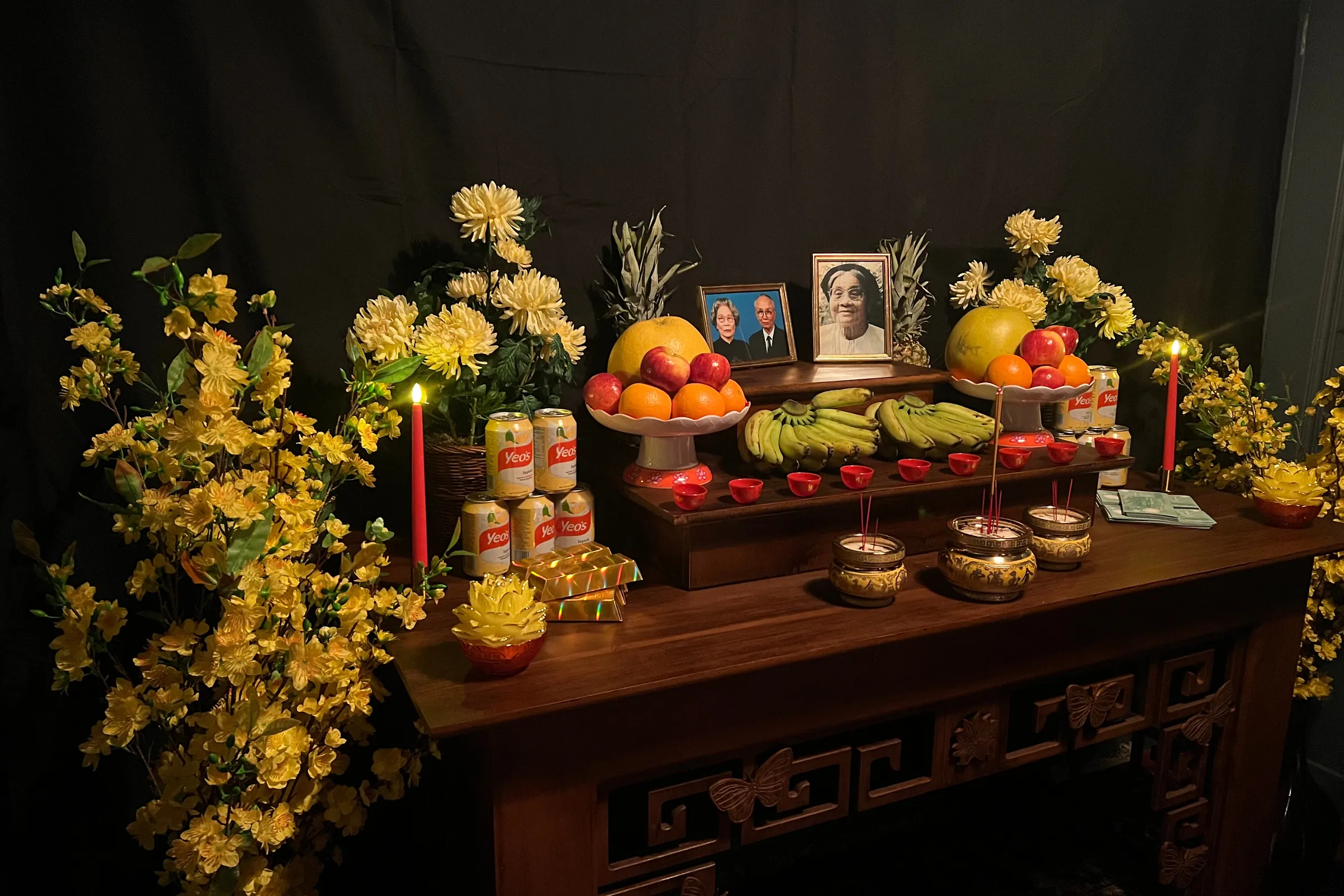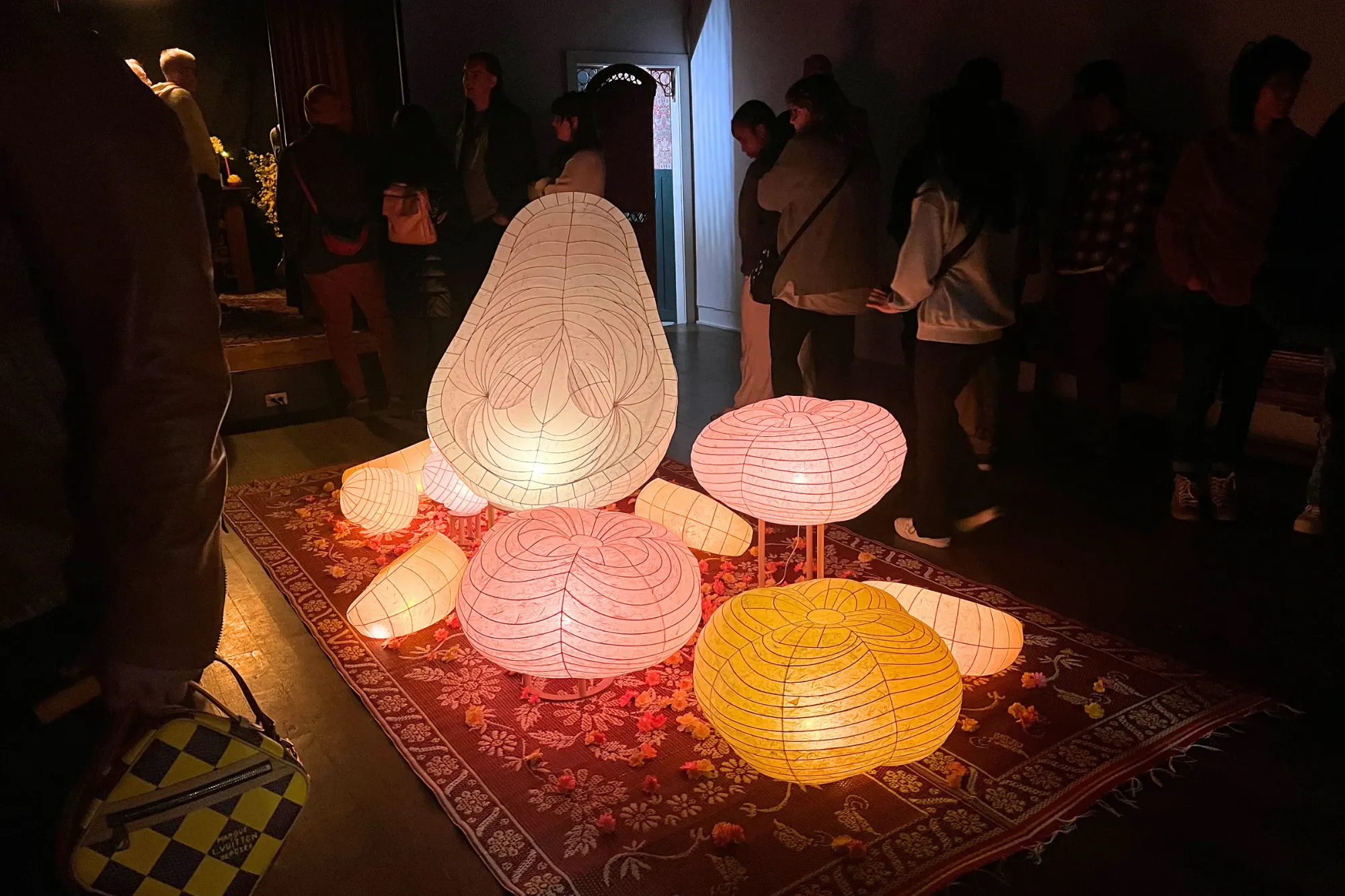“I Bear the Fruit of My Ancestors“
Belafonte
Tulsa
March 1, 2024
A dimly lit space permeated with the smell of burning incense greeted visitors, many of whom waited in line before the doors opened, to Tulsa artist Dan Lyn Pham’s “I Bear the Fruit of My Ancestors.” The three-part show was a journey between the symbolic and the literal, exploring Vietnamese ancestral worship, a cultural custom that has endured generations — beyond any specific religion, beyond colonization, and then across the world into the homes and gathering spaces of Vietnamese immigrants and refugees.
The first installation in the show took up most of the main space at Belafonte: a jumble of glowing, oversized paper lanterns in the shape of cut fruits arranged over a rug. The pear, persimmons, lychee, mandarins, and mangosteen were beautiful and delicate in their own right, while also imbued with deep cultural resonance.
Having a plate of cut-up fruit placed in front of you in the home of an East Asian person is as ubiquitous as a westerner’s offer of, “Can I get you something to drink?” Cut fruit has been an enduring theme in Pham’s work, with focus on the implications of the offer: not merely rote hospitality, but an act of service and of love, especially within the family. (A personal anecdote to drive this home: on a recent trip to visit extended family in Korea, most of whom we had not seen in decades, almost every relative we visited insisted we not leave before partaking in a shared plate of cut-up Korean pear or apple.) Turning this small, common act of kindness into a glowing centerpiece brought its meaning front and center.
The second installation was presented on Belafonte’s diminutive stage. The Vietnamese ancestral altar is a sacred space created in Vietnamese homes to honor ancestors and keep present the connection between the living and the departed, the past and the future. While these fixtures are perpetual, the altar is also used as a gathering place on the death anniversary of a departed loved one. Pham’s altar — a gorgeous, handbuilt wooden table affixed with wooden butterflies — was a showpiece in itself, topped with family photos, burning incense, offerings of sustenance (fruit, soy milk) and wealth (joss paper gold bars), as well as candles and chrysanthemums. She shared the process of creating the table ahead of the show via social media, again inviting followers to take stock in the ritual and effort behind these traditions rather than just the beauty of the final product.

Tulsa chef collective et al. provided the final piece, giving visitors an opportunity to take in the artwork while also communing over food, a nod to sharing a meal on the anniversary of an ancestor’s death. Patrons on Belafonte’s back patio may have occasionally caught a whiff of steam from an open rice cooker, one of the definitive scents of an Asian household, as the chefs served onigiri and salmon hand rolls made to order. The final et al. menu item was two slices of watermelon dressed with sour sugar and pickled Fresno chiles — a plate of cut fruit meant to be shared.
The show was a warm act of tribute to tribute itself, and the staging felt like being invited into a home. The scale of Pham’s pieces emphasized the labor behind these commonplace cultural practices, giving the stage — literally — to the gravity behind ritual practices. As ephemeral as a plate of cut fruit, the show, as of this writing, was one-night-only — but more of Pham’s work is available at www.danlynhpham.com.
Next at Belafonte: Oscars Viewing Party, March 10






